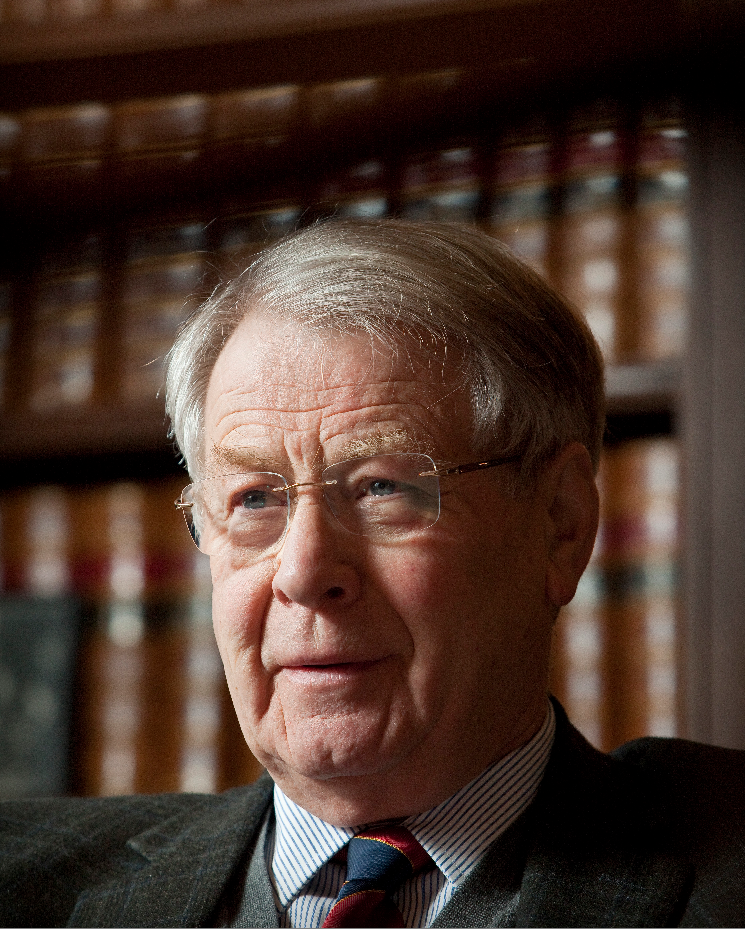Session Cases At 200: The wisdom of the Institutional Writers

Sir David Edward
For the final nomination in our series supporting the Scottish Council of Law Reporting’s search for readers’ favourite Session Case, Sir David Edward reflects on Brown v Hamilton District Council 1983 S.C. (H.L.) 1 – in which he himself appeared. Voting closes at midnight tonight. The results will be revealed in due course.
I have a particular affection for this case, which I argued for the appellants. In those days, in the few weeks before Parliament resumed in November, the law lords used to sit in the chamber to demonstrate that their proceedings were indeed proceedings of Parliament. They sat at little desks in the well of the chamber. Senior counsel in full-bottomed wigs addressed them from a rostrum several feet higher, so that it was rather like peering down into a fishbowl. There was space at the front of the rostrum for only the two leaders, with a small ledge for books or papers. Juniors and solicitors sat several feet behind. Peers, including bishops in robes, wandered in and out to hear what was going on. It was an experience that no one will have again, now that everything is done in mufti in the Middlesex Guildhall.
The real issue in Brown was the nature and extent of the powers of the Scottish courts to review administrative acts. The remedies available were clumsy and slow through actions of declarator and/or reduction. Such actions could be raised in the Sheriff Court as well as the Court of Session. The question was whether, nevertheless, the Court of Session alone had power to review acts of public bodies (in Brown, the ‘act’ was decision of the District Council that Mr Brown was ‘intentionally homeless’). The Second Division, on a literal reading of Lord President Inglis in Forbes v Underwood (1886) 13 R.465, held that, since the council’s decision was not ‘judicial’ in character, the Court of Session did not have privative jurisdiction, so the case could proceed in the Sheriff Court. Lord Dunpark dissented.
The idea that the power of judicial review depended on the character of the decision – whether or not it was ‘judicial’ or ‘quasi-judicial’ – had led to many intricate distinctions in English law, though it not to a great extent in Scotland. Our task was to demonstrate, first, that judicial review (in the modern sense) was, by its nature, a jurisdiction that could belong only to the Court of Session; and second, that judicial review was concerned with the proper exercise of powers, whether judicial, quasi-judicial or administrative.
My junior, Matthew Clarke, and I spent many days searching the institutional writers and cases in Morison’s Dictionary to find the source of the power of judicial review, so as to show that it belonged exclusively to the ‘pre-eminent jurisdiction’ of the Court of Session. When it came to the hearing, there was a certain thrill in showing the practical wisdom of our judges in the age of enlightenment, and to found our argument on their simple and lucid statements of principle. At one point, Lord Diplock remarked that the words used were surprisingly modern. Lord Fraser said in his speech that the basic principle on which judicial review is founded had been stated in 1756 “in terms which, so far as they go, would be perfectly appropriate to the present day”. (Matthew later refined our arguments as senior counsel in West v Secretary of State for Scotland (1992 S.C. 385)).
As Lord Fraser pointedly observed, what was not appropriate to the present day was the clumsiness and delay of the available procedure for judicial review. I bade farewell to this chapter of my life by serving on Lord Dunpark’s Working Party that devised the modern procedure.
Sir David Edward KCMG PC QC FRSE is a former Judge of the Court of Justice of the European Communities. Among his other many distinctions, Sir David gave the first of the SCLR’s Macfadyen Lectures, ‘What are Judges for?’ in 2010.








